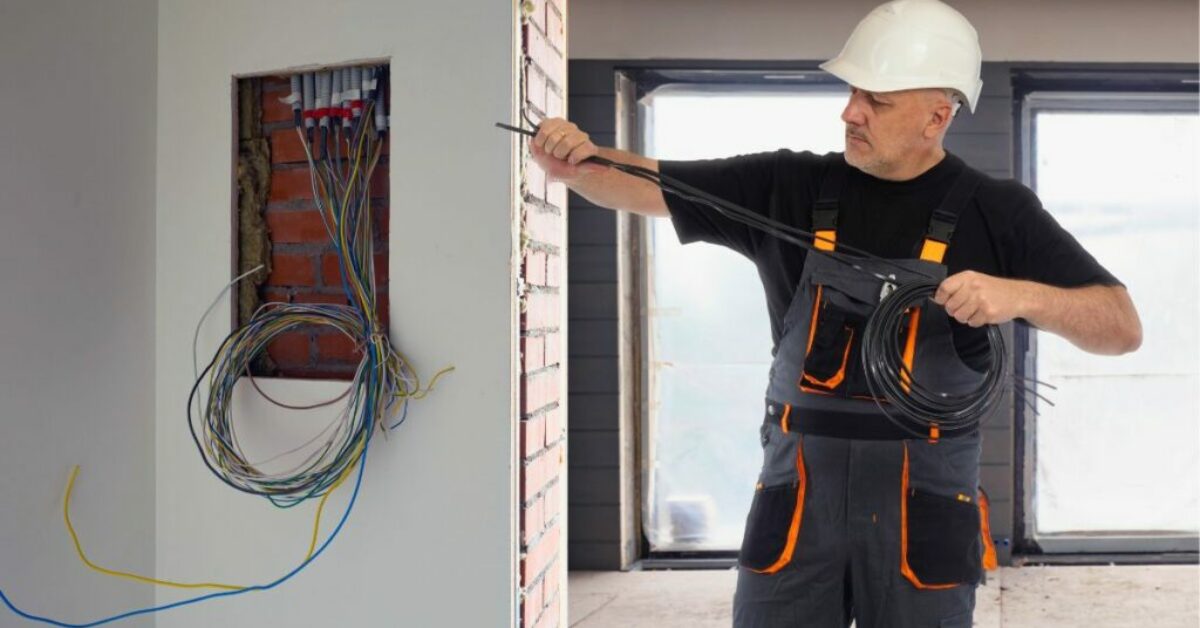What Type Of Pants Provide Shielding From Electrical Shocks?
Electrical shocks can cause serious injuries and even prove fatal in some cases. Workers who are constantly exposed to electrical hazards must take every necessary precaution to prevent electrocution and other related accidents. Electrically shielded clothing, such as pants, can provide a layer of protection against electrical shocks. This article will discuss the different types of electrically shielded pants available and the factors to consider when choosing them.
Understanding Electrical Shocks and Their Dangers
Electricity is a fundamental part of modern life, powering everything from our homes to our workplaces. However, it can also be incredibly dangerous, and an electrical shock can result in serious injuries. Understanding the dangers of electrical shocks is crucial to prevent them from happening in the first place.
Electrical shocks occur when a current flows through the human body. Even a small current can cause injuries and affect the normal functioning of the body. Electrical shocks can result in burns, muscle contractions, respiratory failure, and even cardiac arrest.
What is an Electrical Shock?
An electrical shock is the physiological reaction of the body to an electric current passing through it. The severity of the shock depends on the magnitude of the current, the path of the current through the body, and the duration of the shock. The human body is a good conductor of electricity, so any contact with an electrical current can cause an electrical shock.
Electrical shocks can be caused by various reasons, including direct contact with live wires, using faulty equipment, or coming into contact with water or metal surfaces that have electrical current running through them. It is essential to identify the potential sources of electrical hazards and take appropriate measures to prevent electrical shocks.
Common Causes of Electrical Shocks
There are many common causes of electrical shocks. One of the most common causes is direct contact with live wires. This can happen when someone is working on electrical equipment without turning off the power supply or when someone touches a live wire accidentally. Faulty equipment can also cause electrical shocks, especially if the insulation is worn out or damaged.
Another common cause of electrical shocks is coming into contact with water or metal surfaces that have electrical current running through them. This can happen in wet environments, such as swimming pools, or when working with electrical equipment in damp conditions.
Health Risks and Potential Injuries
The health risks of electrical shocks range from minor burns to cardiac arrest and death. Any exposure to electrical hazards can cause injury or even death, and prompt medical attention for even the slightest electrical shock is necessary.
The severity of the injuries caused by electrical shocks depends on the magnitude of the current and the path it takes through the body. Electrical shocks can cause burns, muscle contractions, respiratory failure, and even cardiac arrest. In severe cases, electrical shocks can lead to permanent damage to the nervous system, brain, and other vital organs.
It is essential to take precautions to prevent electrical shocks, such as wearing protective gear, using insulated tools and equipment, and ensuring that electrical equipment is properly maintained and inspected regularly. By understanding the dangers of electrical shocks and taking appropriate measures to prevent them, we can ensure that we stay safe while using electricity in our daily lives.
The Science Behind Electrically Shielded Clothing
Electrically shielded clothing is a viable option to protect workers from electrical hazards. Conductive materials are used to create pants that are designed to prevent electrical currents from penetrating the human body. These materials offer electrical resistance, which means they help to control the flow of current, protecting the wearer.
Conductive Materials and Their Properties
The conductive materials used in electrically shielded pants include materials that have a low resistance to electrical current. These materials are usually made of metal fibers or conductive polymers. The properties of these materials prohibit the flow of electrical energy, which prevents electrical currents from reaching the body and protecting workers from electrical hazards.
Some common materials used in electrically shielded clothing include copper, aluminum, and stainless steel. These materials are known for their excellent electrical conductivity and are often used in electrical wiring and circuitry. When woven into fabric, they can provide a layer of protection against electrical hazards.
How Electrically Shielded Clothing Works
Electrically shielded clothing works by preventing the flow of electrical current through the body. The conductive materials used in the pants ensure that any electrical current flows through the clothing instead of the wearer’s body. This feature provides a layer of protection against electrical shocks for workers who are constantly exposed to electrical hazards.
Electrically shielded clothing can be designed to protect against different types of electrical hazards, including arc flashes and electrical contact. Arc flashes occur when an electrical current jumps between two points, creating an intense burst of heat and light. Electrically shielded clothing can help to protect against these flashes by preventing the current from reaching the body.
Electrical contact occurs when a person comes into direct contact with an electrical current. This can happen when working with live wires or electrical machinery. Electrically shielded clothing can help to prevent electrical contact by providing a barrier between the wearer and the electrical current.
Standards and Certifications for Electrically Shielded Clothing
There are various standards and certifications for electrically shielded clothing. The most common certification is the American Society for Testing and Materials (ASTM) F1891, which outlines the standard performance requirements for arc-rated and flame-resistant rainwear.
Other certifications include the National Fire Protection Association (NFPA) 70E, which provides guidelines for electrical safety in the workplace, and the International Electrotechnical Commission (IEC) 61482, which specifies the requirements for protective clothing against the thermal hazards of an electric arc.
When selecting electrically shielded clothing, it is important to choose garments that meet the appropriate standards and certifications for the specific type of electrical hazard that workers will be exposed to. This can help to ensure that workers are adequately protected and can perform their jobs safely.
Types of Pants That Offer Electrical Shock Protection
There are different types of electrically shielded pants available in the market that offer protection against electrical shocks. It is essential to choose the right type of pants based on the work environment and the type of electrical hazards that workers are exposed to.
Antistatic Pants
Antistatic pants are designed to prevent the buildup of static electricity on the surface of the pants. They are made using materials that resist static electricity and help dissipate any charge buildup that occurs during work. These pants are commonly used in the electronics industry, where workers are exposed to sensitive electronic components that can be damaged by static electricity. Antistatic pants are also used in the chemical industry, where workers handle flammable liquids and gases that can ignite with a spark.
Conductive Fiber Pants
Conductive fiber pants are made using materials that have conductive properties, which help to prevent electrical current from flowing through the wearer’s body. This type of pants is commonly used in the manufacturing industry, where the workers are constantly exposed to electrical hazards. Conductive fiber pants are also used in the telecommunications industry, where workers are exposed to high-voltage power lines and electrical equipment.
Metal-Infused Fabric Pants
Metal-infused fabric pants are designed to protect against electrical hazards. They are made using fibers that are infused with metal, providing a layer of protection against electrical currents. These pants are commonly used in the electrical industry, where workers are exposed to electrical hazards regularly. Metal-infused fabric pants are also used in the construction industry, where workers handle power tools and heavy machinery that can cause electrical shocks.
Flame-Resistant Pants
Flame-resistant pants are made using materials that are designed to self-extinguish or not catch fire. These pants are commonly used in the welding industry, where workers are exposed to sparks and flames, which can cause burns and injuries. Flame-resistant pants are also used in the oil and gas industry, where workers handle flammable materials and work in environments with a high risk of fire.
Factors to Consider When Choosing Electrically Shielded Pants
When working in an environment with electrical hazards, it’s essential to wear protective clothing, including electrically shielded pants. These pants are designed to protect workers from electrical shock, burns, and other injuries that can result from electrical accidents. However, not all electrically shielded pants are created equal, and it’s crucial to consider various factors when choosing the right pants for the job.
Level of Protection Required
The level of protection required depends on the type of work and the potential electrical hazards workers are exposed to. For example, workers who handle high-voltage electricity require pants with a higher level of protection than those who work with low-voltage electricity. It’s essential to choose pants that offer adequate protection for the job at hand.
When selecting electrically shielded pants, it’s vital to consider the level of protection they offer. Look for pants that meet industry standards, such as ASTM F1506 or NFPA 70E, which provide guidelines for protective clothing for electrical workers. These standards ensure that the pants have been tested and certified to provide adequate protection against electrical hazards.
Comfort and Fit
Comfort and fit are critical aspects when choosing the right pants. The pants should fit well and allow for easy movement and flexibility. Workers should feel comfortable wearing the pants throughout the day.
When selecting electrically shielded pants, consider the material used to make them. Look for pants made from lightweight, breathable materials that allow for air circulation and prevent overheating. The pants should also have a comfortable waistband and adjustable cuffs to ensure a snug fit.
Durability and Maintenance
Electrically shielded pants should be durable and able to withstand regular use. They should also be easy to clean and maintain, ensuring that they have a long lifespan.
When selecting electrically shielded pants, consider the durability of the material and construction. Look for pants made from high-quality materials that can withstand wear and tear. The pants should also be easy to clean and maintain, with instructions provided for washing and care.
Price and Availability
The price of electrically shielded pants should fit into the budget of the company while still offering appropriate protection. It’s also essential to find pants that are readily available in case of replacement or additional clothing needs.
When selecting electrically shielded pants, consider the price and availability of the pants. Look for pants that offer the right level of protection at a reasonable price. It’s also essential to find pants that are readily available from a reliable supplier, ensuring that replacements or additional clothing needs can be met quickly.
Overall, choosing the right electrically shielded pants is essential for protecting workers from electrical hazards. By considering factors such as the level of protection required, comfort and fit, durability and maintenance, and price and availability, companies can ensure that their workers are safe while on the job.
Additional Safety Measures to Prevent Electrical Shocks
While electrically shielded pants provide a layer of protection against electrical shocks, some additional safety measures can prevent these accidents from happening in the first place.
Electricity is a powerful force that can cause serious injury or death if not handled properly. Workers who are exposed to electrical hazards on the job must take precautions to prevent accidents. Here are some additional safety measures that can help prevent electrical shocks:
Proper Grounding Techniques
It’s essential to educate workers on proper grounding techniques and practices to prevent electrical shocks. Grounding creates a safe path for electricity to flow, reducing the risk of electrical hazards and injury. Workers should be trained to properly ground all electrical equipment before use, and to avoid touching electrical conductors with bare hands or other body parts.
Grounding is particularly important in wet or damp conditions, where the risk of electrical shock is higher. In these conditions, workers should use ground fault circuit interrupters (GFCIs) to protect against electrical shock.
Insulated Tools and Equipment
Using insulated tools and equipment can prevent electrical hazards. These types of tools and equipment have protective insulation, preventing electrical current from reaching workers and providing an additional layer of protection against electrical shocks.
Insulated tools and equipment should be inspected regularly to ensure that the insulation is intact and in good condition. Any damaged or worn tools should be replaced immediately to prevent electrical hazards.
Electrical Safety Training and Awareness
Workers should receive regular training on electrical safety to remain aware of the risks of electrical hazards. Training can help them to recognize electrical hazards and learn how to take necessary precautions to prevent accidents.
Workers should also be trained to identify and report any electrical hazards they encounter on the job. This can help prevent accidents and ensure that hazards are addressed promptly.
Personal Protective Equipment (PPE) beyond Pants
Workers should wear proper personal protective equipment (PPE) to protect against other hazards, such as falls, burns and eye injuries, etc. PPE includes helmets, safety glasses, gloves and more.
When working with electricity, workers should wear insulated gloves and boots to protect against electrical shock. Additionally, workers should wear flame-resistant clothing to protect against burns in case of an electrical arc flash.
By following these additional safety measures, workers can reduce the risk of electrical shocks and other electrical hazards on the job. It’s important to prioritize safety and take necessary precautions to prevent accidents and injuries.
Staying Safe from Electrical Shocks with the Right Pants
Electrically shielded pants are an essential part of electrical safety, protecting workers from electrical shocks and other hazards. With the right understanding and awareness, workers can take precautions to avoid electrical accidents, ensuring they remain safe and healthy while on the job.




